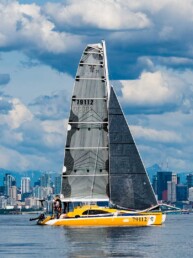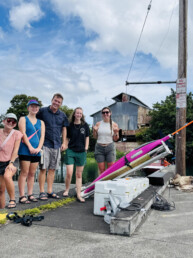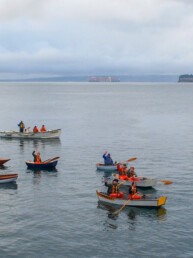This article was originally published in the November 2021 issue of 48° North.
Marine diesels endure a tough life during their time on board a vessel. Often I hear, “A diesel will last forever,” or, “That engine will get a minimum of 10,000 hours before it dies.” Unfortunately, even the best maintained recreational engines rarely clock 10,000+ hours. This can mostly be attributed to lack of operation and the environment where they are stored.
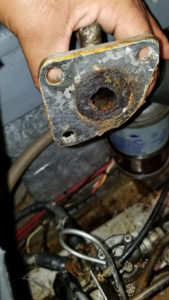 Diesel engines thrive when they are used often and run at 80% or more throttle under load. A generator on a container ship that runs all day and night can easily clock over 10,000 hours because it is running 99% of the time at a speed under load that puts it in its happy place. The marine diesel on your sailboat that only gets you in and out of the marina during the summer most likely will not serve you for as many operating hours, due to the less-than-optimal effects of the time it sits doing nothing.
Diesel engines thrive when they are used often and run at 80% or more throttle under load. A generator on a container ship that runs all day and night can easily clock over 10,000 hours because it is running 99% of the time at a speed under load that puts it in its happy place. The marine diesel on your sailboat that only gets you in and out of the marina during the summer most likely will not serve you for as many operating hours, due to the less-than-optimal effects of the time it sits doing nothing.
Another big hurdle is the fact that, over the course of 40+ years, parts for many engines may become scarce because recreational engine manufacturers generally don’t support their engines for nearly as long as their commercial counterparts.
On top of these challenges, the marine environment itself is not the best place for an engine — and this reality is a major factor in the importance of running an engine frequently and staying current with maintenance in order to keep it at peak performance for as long as possible.
Engine technology hasn’t changed too much in the last 100 years, mostly because it works and it works well. Engine blocks, cylinder heads, manifolds, and other components are built out of cast iron, steel, aluminum, copper, and even bronze. These materials can last decades in a tractor used in the cornfields of Iowa stored in a heated barn for the winter, but may not last 10 years in a salty marine environment. I see engines less than 10 years old with signs of severe corrosion from salty air, raw water components blocked and corroded, electrical components — such as starters and alternators — corroded and failing because moisture (salty moisture at that!) has crept in over time. Even in freshwater environments, moisture creeping in anywhere will have negative effects on the metallic surfaces of an engine.
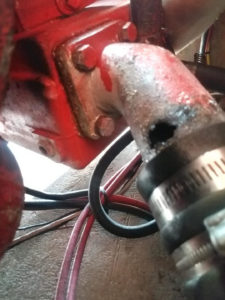 The vast majority of marine engines are painted with a rust-preventative type of paint that helps prevent excessive rust from forming and damaging components; but with time and multiple heat cycles, this paint chips and falls off. Failure to clean and prep the surface for re-application of paint encourages more corrosion and the cycle continues. Rust acts like cancer — it can return over and over; and if not kept under control, it will.
The vast majority of marine engines are painted with a rust-preventative type of paint that helps prevent excessive rust from forming and damaging components; but with time and multiple heat cycles, this paint chips and falls off. Failure to clean and prep the surface for re-application of paint encourages more corrosion and the cycle continues. Rust acts like cancer — it can return over and over; and if not kept under control, it will.
On a boat, diesels are typically housed directly above the bilge which, essentially, is a storage space for water (salt or fresh) and I see a lot of corrosion on the bottom side of the oil pan. Various leaks from raw water hoses or the raw water pump contribute to the problem as well.
Another type of corrosion that we don’t think about as often and is not nearly as obvious is the dezincification of the brass and bronze components of our engines. Raw water plumbing, heat exchangers, reservoirs, thru-hulls, and other components are subject to this; as saltwater and even freshwater can dissolve the zinc out of the brass alloy, leaving behind a severely brittle skeleton of the former part. I see this most often in raw water plumbing where the brass or bronze part has lost enough zinc that the part has turned pink, and what is left behind is the porous copper. Be very careful with plumbing and fittings below the waterline, and spend the money for quality marine silicon bronze — it will be the most corrosion resistant and is alloyed with tin (instead of the zinc used in brass). Yellow and red brass plumbing is alloyed with up to 50% zinc and we all know what zinc is on a boat: a sacrificial anode! Manganese bronze, tobin bronze, and commercial bronze can be found on deck and is fine above the waterline, but can be subject to structural failure below the waterline. These bronzes are easier to machine and cast, but will fail you if exposed to galvanic corrosion. Dezincification of parts is a necessary evil — but the addition of sacrificial anodes such as aluminum or zinc (and changing them out regularly) will help prevent damage for longer periods of time. Eventually, however, any parts exposed to raw water will see failure, as no amount of zinc can protect you forever.
Another age-related factor to keep in mind is the fluids inside your engine and how fast they may or may not break down. For our automobiles, we all have heard “change your oil every 3,000 miles or three months,” but what about our marine diesels? Engine oil breaks down as it goes through various heat cycles and lots of pressure from inside the engine. Regular oil or “mineral oil” can be subject to oil oxidation in extreme heat and cold temperatures. Conventional oils can be drastically affected with extreme heat and, as a result, their viscosity will change. Mineral oils are made with impure irregular-shaped molecules and, as oil heats up, the smaller, lighter molecules can evaporate — leaving behind the heavier larger molecules and resulting in more viscous oil. This can lead to oil consumption and deposits being left behind. Deposits can also inhibit heat escape, resulting in an engine running hotter than normal, thus exacerbating the process of oil breakdown.
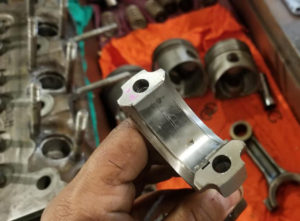 Many medium and large recreational marine engines are equipped with various oil coolers to help keep oil temperature stable and to prevent breakdown. While extreme cold temperatures may be rare in the Pacific Northwest, it is still possible for oil to thicken since it is made with paraffins. Oil that is too thick on startup will cause excessive damage, as it takes a longer period for oil to reach all the necessary galleries when the engine is cold. There are many additives that help with these issues, such as Lucas Oil Stabilizer, but the best thing to do is complete oil and filter changes regularly. Synthetic oils, while more resistant to breakdown, are not immune to issues as well.
Many medium and large recreational marine engines are equipped with various oil coolers to help keep oil temperature stable and to prevent breakdown. While extreme cold temperatures may be rare in the Pacific Northwest, it is still possible for oil to thicken since it is made with paraffins. Oil that is too thick on startup will cause excessive damage, as it takes a longer period for oil to reach all the necessary galleries when the engine is cold. There are many additives that help with these issues, such as Lucas Oil Stabilizer, but the best thing to do is complete oil and filter changes regularly. Synthetic oils, while more resistant to breakdown, are not immune to issues as well.
Coolant, though not exposed to the intense pressure and heat that oil is, can also break down in time. Coolant does in fact have a shelf life and requires changes every so often depending on the make and chemistry. Antifreeze’s main job is two-fold: corrosion resistance and boiling/freezing protection. Antifreeze has poor thermodynamic properties and relies on water to actually carry the heat away from the engine. Conventional ethylene glycol based coolant has an approximate 2- to 3-year lifespan before it drastically loses its ability to prevent corrosion and protect from extreme temperature changes. Even if your engine is not used often, it is important to change your coolant regularly.
Circling back to where we began, it is critical to remember that your engine will suffer if it is not run regularly. “An engine that sits, is one that will die” is a sentiment I learned from a seasoned mechanic years ago. An under-used marine diesel engine allows corrosion and the breakdown of components to take their maximum toll. A good rule of thumb is to run your engine at least once a month (if not more!), and to ensure this is done hard under load. The longer it sits unused, the more likely it will encounter trouble starting for a range of reasons; and the situation can only get more complicated from there.
Diesels love to operate all the time, running at least 80% under load. You will get the longest life out of your engine if you are not afraid to run it hard on a regular basis. Changing fluids, zincs, and keeping a clean engine free from corrosion will get you the longest life out of it as possible. Time in the marine environment can and will take its toll. Fight back before you have an issue and you will save yourself — and your engine — a lot of stress.

